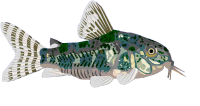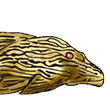Otorongo woodcat finally gets a name
- Silurus
- Posts: 12461
- Joined: 31 Dec 2002, 11:35
- I've donated: $12.00!
- My articles: 55
- My images: 896
- My catfish: 1
- My cats species list: 90 (i:1, k:0)
- Spotted: 428
- Location 1: Singapore
- Location 2: Moderator Emeritus
- bekateen
- Posts: 9648
- Joined: 09 Sep 2014, 17:50
- I've donated: $40.00!
- My articles: 4
- My images: 143
- My cats species list: 146 (i:106, k:34)
- My aquaria list: 41 (i:18)
- My BLogs: 44 (i:154, p:2563)
- My Wishlist: 36
- Spotted: 184
- Location 1: USA, California, Stockton
- Location 2: USA, California, Stockton
- Contact:
Re: Otorongo woodcat finally gets a name
Thanks, Silurus. Here's the name and abstract:
=
Marcelo Rocha, Felipe Rossoni, Alberto Akama, & Jansen Zuanon. (2019). A new species of spiny driftwood catfish Spinipterus (Siluriformes: Auchenipteridae) from the Amazon basin. Journal of Fish Biology, First published: 21 November 2019. https://doi.org/10.1111/jfb.14211
=
Marcelo Rocha, Felipe Rossoni, Alberto Akama, & Jansen Zuanon. (2019). A new species of spiny driftwood catfish Spinipterus (Siluriformes: Auchenipteridae) from the Amazon basin. Journal of Fish Biology, First published: 21 November 2019. https://doi.org/10.1111/jfb.14211
The paper credits PCF member @The.Dark.One for his contributions to the paper. Congratulations!Abstract
An expedition to the middle Río Purus basin uncovered a remarkable new species of the genus Spinipterus. The new species has a very distinct and conspicuous colour pattern resembling a jaguar and it is almost four times larger than , a small specimen (32 mm LS) from Caño Santa Rita, a right bank tributary of Río Nanay in Peru and a second specimen was reported from Río Juruá, Amazonas State, Brazil. Although the new species is more similar in size and colour pattern to , it shares the synapomorphies for Spinipterus. The new species differs from the congener by the following characters: (1) colour pattern with large black rosette‐like spots over a light yellow to brown background (v. brown background with small dark blotches over the body); (2) adult body size reaching 104.5 mm LS (v. maximum known size 37.1 mm LS); (3) posterior process of cleithrum short, never reaching vertical through the dorsal‐fin origin (v. posterior process long, surpassing vertical through the dorsal‐fin origin); (4) seven soft pectoral‐fin rays (v. six); (5) caudal fin truncated (v. caudal fin rounded).
Find me on YouTube & Facebook: http://youtube.com/user/Bekateen1; https://www.facebook.com/Bekateen
Buying caves from https://plecocaves.com? Plecocaves sponsor Bekateen's Fishroom. Use coupon code bekateen for 15% off your order. Also, for you Swifties: Https://youtu.be/ZUKdhXL3NCw






/g/s/1.jpg)


